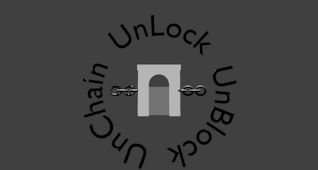
In my earlier post, I explained in lesser detail from a new user’s perspective, how the transactions are created, processed and finally put up on the blockchain. I also explained with an example of how to set up a wallet and purchase a CryptoKitty for the whole world to see. With this newly purchased asset, its possible to rent or trade or sell them in the future or just breed them to create a cute family of kittens to make your friends jealous.
Now that you are no longer a beginner, want to get a better understanding of what is happening behind the scene. What is this bitcoin or ether or any other cryptocurrency that you are using actually worth? Where does it all come from and why is it considered valuable by majority of the people who use it for transactions? The answer to these questions are unfortunately not as simple as similar answers about real money. Real money gets printed by mints as per monetary policies of the country and gets it value because it is issued and backed by the government.
Similar to a government that designs its monetary policy, each blockchain may have its own objectives and policies to reach those objectives. Cryptocurrency that resides on the records of a blockchain is originally created by “mining”. Mining process for a particular blockchain network is designed in a way that stakeholders who contribute to achieve the objectives of the blockchain are rewarded.
As mentioned in earlier posts, one of the main objective that public blockchains like Bitcoin try to attain is Trust via decentralized action of miners competing against each other to earn mining reward. In simple words, Blockchain creates new money to reward the miners for supporting the blockchain. The rules of creating new records are designed such that under normal circumstance, if certain miners try to manipulate system to create invalid transaction, remaining miners are able to detect the manipulations and reject the manipulated transaction. This process by which the acceptance or rejection of transactions, processed by a certain miner, by rest of the miners of the blockchain is called “Consensus”.
There have been a few extreme cases in the past where consensus was not attained between the miners and so the blockchain got split down two different paths, one which accepted certain changes and one which rejected the same changes. At a philosophical level, this can be seen as a democracy of the purest form in action.
Due to the very design of blockchain technology, there is always a threat of possibility where the miners can collectively act in a way that undermines the objective of the blockchain. In fact the blockchain community has coined a term called 51% attack where if a cooperating group of miners have more than 51% of the processing capacity of the blockchain, they can easily act in a malicious manner and force other miners to accept invalid transactions. Although there have been actual instances where group of miners have attained more than 51% processing power, they voluntarily reduced their processing capacity to prevent negative consequence to the reputation of the blockchain.
I hope I have been able to give a glimpse (without getting too deep into the technicalities) of how the cryptocurrencies operate behind the scene, how this whole blockchain revolution has given birth to a totally new economy and why people consider the transactions recorded on the blockchain as trustworthy records that may be purchased using hard earned money and be exchanged for valuable goods and services.
I plan to write in greater detail in later posts, what are different kind of mechanism for reaching consensus and what implications it has for the miners and other participants on the blockchain. Stay tuned.